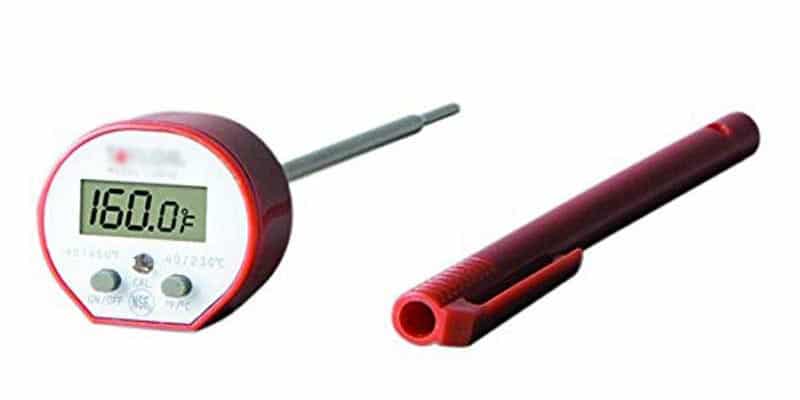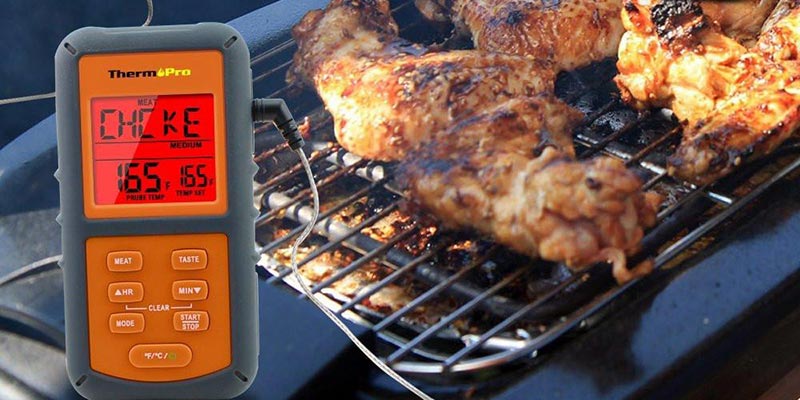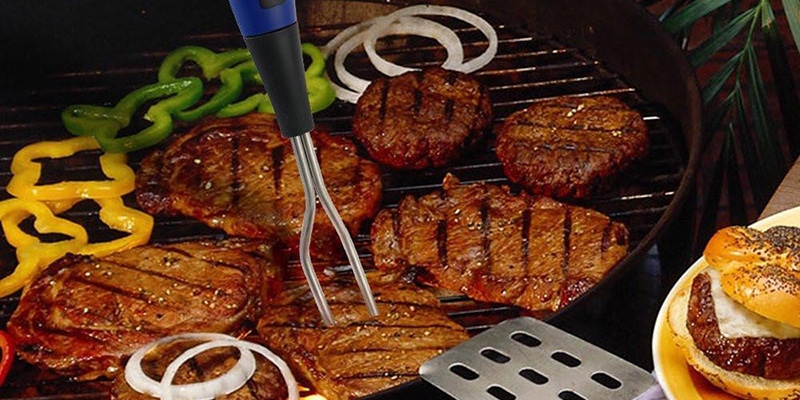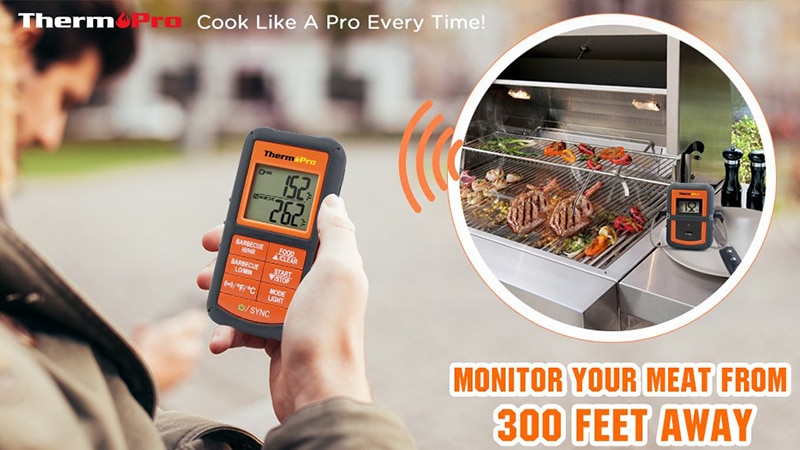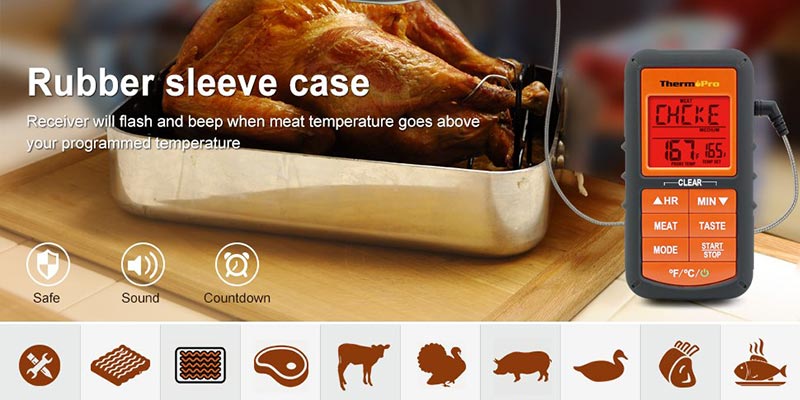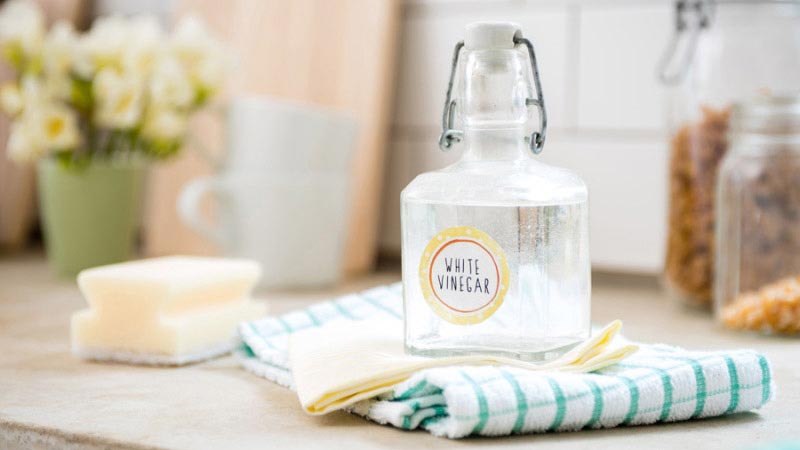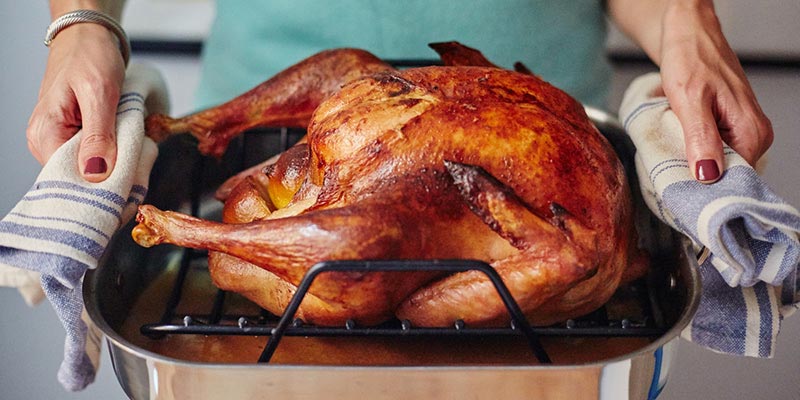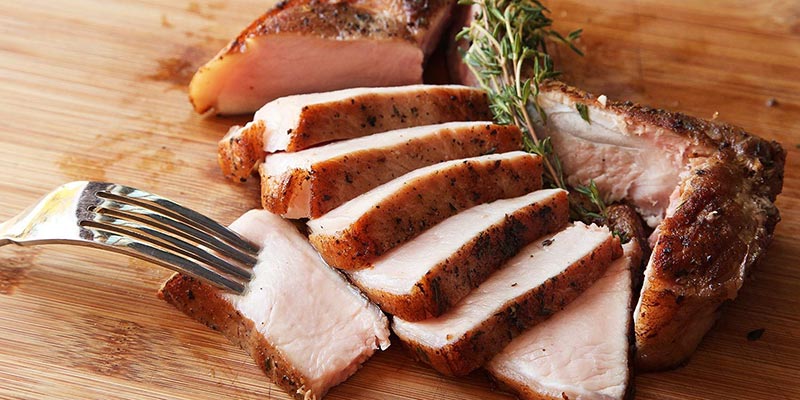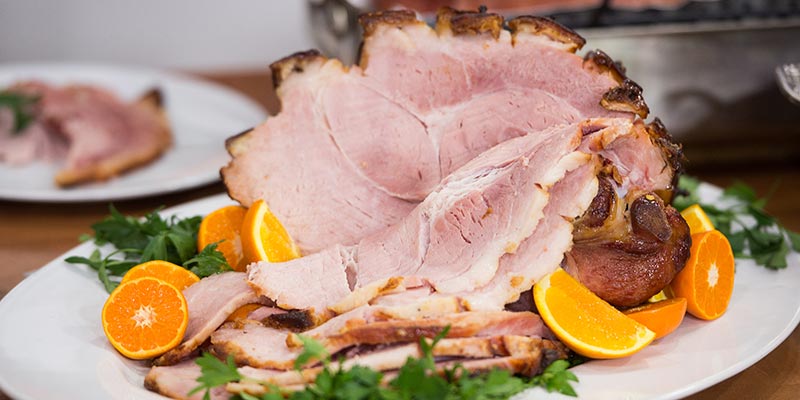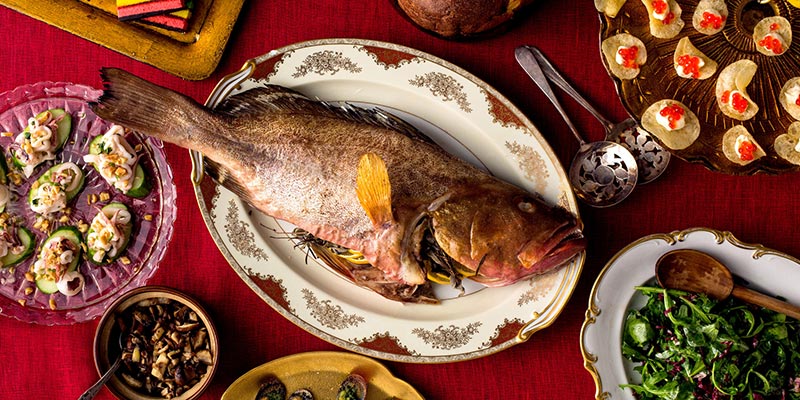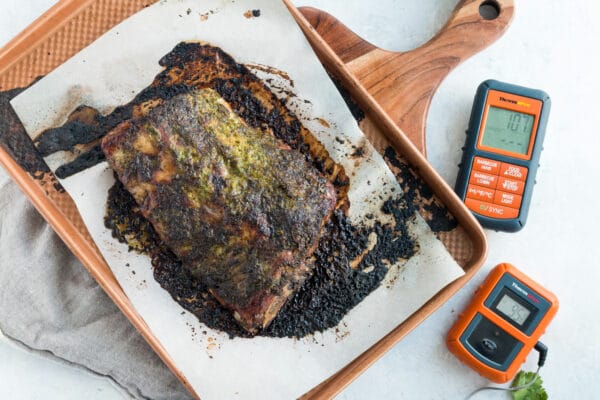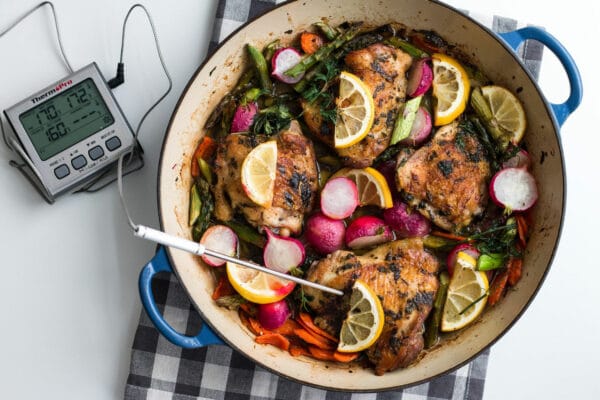The Essential Function and Use of Meat Thermometers
Everyone knows that great chefs learn their trade at culinary schools, and one of the first things that they learn in culinary school is all about meat thermometers. Meat thermometer guides are in the textbooks, and the critical knowledge of their use must be as comprehensive as a meat thermometer wiki article.
Many people have experienced the frustration of stewing meat improperly. Whether it’s a dry Thanksgiving turkey, an overdone roast beef, or a chicken that looks a little too pink, the cook, who has tried their best to please, is embarrassed and angry with themselves. Outside of enduring an unpleasant meal, there is the financial consideration, as good meat is expensive and when cooked improperly, some of it, if not all, will go to waste.
Any professional chef will confirm that the key to cooking meat the right way is to cook it to precisely the perfect temperature for the type of meat and the cut that is under preparation. There is only one way to determine the temperature of a piece of meat, and that is with a meat thermometer. A meat thermometer is a fundamental piece of equipment for even the most basic kitchen, but it’s astonishing how many people do not own a meat thermometer or know how to use one.
Meat thermometers measure the temperature inside a piece of meat during or after the cooking process. One of the primary functions of a meat thermometer is to ensure that the meat gets hot enough to kill any pathogens that might cause foodborne illness. Meat thermometers are also used to ensure that meat cooks to an optimal temperature for dining enjoyment.
Basic old-fashioned meat thermometers have two components, a metal rod, or probe and a gauge that reads the information from the rod to display the internal temperature of the meat. The rod consists of two different kinds of metal that function by either expanding or contracting when the temperature of the meat is lower or higher. This information transfers to the temperature gauge, which reads the expansion or contraction into a precise temperature value.
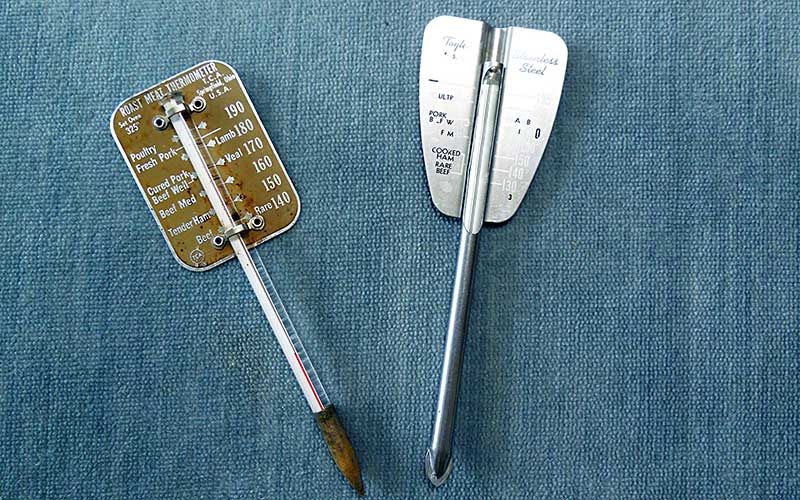
Different Types of Meat Thermometers.
Meat thermometers traditionally were made with a round dial that has a face like a clock and a needle that travels along the face in between the lower and higher temperatures. These types, known as analog thermometers, are the most rudimentary and generally the least expensive. These thermometers can still be purchased in stores and have worked well for decades.

However, advances in technology have paved the way for more advanced types of meat thermometers, such as digital, wireless, and even infrared. Basic digital, instant-read thermometers are the most commonly used today and work great for most oven-based and outdoor cooking jobs. Some digital meat thermometers, such as those made by ThermoPro, are state-of-the-art and incorporate many different functions, including extremely accurate internal temperature readings.
Meat Thermometers for Grilling and Smoking.
Grilling and smoking meats are as popular as ever, and there are meat thermometers explicitly designed for this application, and some of them allow the cook to check the temperature of the grill as well as the meat. Wireless meat thermometers enable the cook to leave the probe in the meat while reading the internal temperature from a distance. This type is for outdoor grilling and smoking that necessitate leaving the thermometer in the meat for an extended time.

Infrared meat thermometers measure the infrared energy that is generated by a cooking piece of meat and uses that measurement to calculate the surface temperature of the meat. These thermometers work well for grilling because the cook points the laser sight at the meat on the grill and the temperature readout displays on the device. These thermometers can also measure the heat of the grill’s surface or the interior of a smoker by aiming the laser at either. A caveat is that infrared meat thermometers measure the surface temperature of the meat, so their use with more substantial cuts of meat is inadvisable. There are also meat thermometers built into barbeque forks, like those made by ThermoPro that are used in their usual capacity as barbeque forks, with the additional function of a meat thermometer. Insert the fork, press a button, and the temperature displays.

Here is a quick video that shows how to use a meat thermometer when grilling steak, and this technique works just as well for other cuts of meat on the grill, such as chicken breasts or pork chops. There are meat thermometers that are designed just for smoking, and many people who smoke meats prefer a two-prong wireless remote smoker, such as those made by ThermoPro. These models allow the cook to leave the thermometer in the meat for a long time and the remote feature is nice because some of the better models have a signal strong enough to allow cooks to monitor their meat from indoors. This way, the precise temperature of the meat is available continuously.

Meat Thermometer Brands.
There are many different brands of meat thermometers, such as Harbor, GDEALER, Lavatools, OXO, and ThermoPro. Most brands are somewhat similar in function, so the determining factor when purchasing one is the quality. Different ThermoPro meat thermometer models consistently rate in the in the top ten of meat thermometer reviews because of their high quality.
Thermopro Meat Thermometers.
Many professional chefs agree that without question the best meat thermometers available at any price today are ThermoPro meat thermometers. ThermoPro thermometers are built in North America and have been around for many years. ThermoPro offers cutting-edge meat thermometers at reasonable prices because they do not outsource. ThermoPro designs, manufactures, sells and supports their products in-house and this practice helps them maintain quality control and keep their products affordable. The competition, on the other hand, farms out many aspects of production to save money and make bigger profits at the expense of quality. ThermoPro manufactures digital instant-read meat thermometers, meat thermometers with probes, and wireless meat thermometers. ThermoPro is a leading brand, with over 3 million happy customers and offers industry leading warranties on their products because they are confident of the long-lasting quality built into them. Also, ThermoPro delivers outstanding customer service with a dedicated team that is available five days a week from 8:00 AM to 6:00 PM EST by phone, email, or online chat. To learn more about ThermoPro,
click here. Calibration of the Meat Thermometer.
Before using a digital meat thermometer, it is wise to calibrate the device to ensure accuracy, and there are two easy ways to accomplish this calibration. The first is to use a large, wide glass of ice water. Stir the ice around in the glass for a bit to get a consistent temperature, and then insert the thermometer into the water up to the indicator line, or about two inches. Leve it in the water for 15 seconds, making sure that it is not resting on an ice cube or held against the glass. The temperature should read 32 degrees Fahrenheit or zero degrees Celsius and, if it does, the thermometer is accurate. Conversely, a pot of boing water can be used to test the higher end with the goal being 212 degrees Fahrenheit or 100 degrees Celsius.

Dial faced analog thermometers calibrated incorrectly can sometimes be adjusted using a small nut on the back of the dial where it meets the rod. The best bet, though, is to invest in a high-quality meat thermometer at this point that will stay calibrated, such as those made by ThermoPro.
Using the Meat Thermometer.
When using a meat thermometer, the idea is to get a temperature reading at the coolest part of the meat. Most people assume that this is at the center of a piece of meat, and this is usually true, but not always the case. Different types and cuts of meat, such as poultry, beef, and pork, require different placements of the thermometer. Later in this article, there are sections for the exact thermometer placements for different meats.

Nowadays, most people use digital, instant-read thermometers, but the way to insert the device is the same as with the old-fashioned ones with the dial. Keep in mind that instant-read thermometers are usually not oven safe and cannot remain in the oven for any time. The best way to begin to begin measuring the temperature is to wait until the minimum cooking time has elapsed before inserting the probe. Then, insert the probe about 2 inches, and there should be an indicator mark on the thermometer that shows how far to sink the probe. Leave the probe in for 15 seconds, and that is enough time to give an accurate reading. If the meat is underdone, repeat the procedure in a few minutes, depending on how much it is underdone. Check meat that is slightly underdone sooner than meat that is considerably underdone.
Cleaning the Thermometer.
Always make sure to clean the meat thermometer after use. Meat thermometers can be washed with hot, soapy water, but do not immerse them in water and never place them in the dishwasher. For those that are extra cautious hold the business end of the thermometer in a pot of boiling water to completely eradicate bacteria.

Using Thermometers for Different Meats and Cuts.
Different types of meat and various cuts of meat require unique placement of a meat thermometer. These placements are important and while the information below details a variety of meats and cuts, this is by no means a fully inclusive list.
Roast Whole Turkey.

This job is a big one for many because there is a lot on the line when roasting a whole turkey. Usually, there are a lot of hungry people waiting for the final product, and often it is a holiday, like Thanksgiving. When taking the temperature of a roast turkey, push the tip of the thermometer into the inner thigh of the bird near the breast up to the indicator line, or two inches. Make sure that the thermometer does not touch bone. Also, take the temperature in the thickest part of the breast and where the drumstick and the thigh come together. In all cases, leave the thermometer in for 15 seconds. The
U.S.D.A. recommends a minimum temperature for a roast turkey of 165 degrees Fahrenheit because this kills any bacteria. Remember that the turkey needs to set for about twenty minutes, during which time it continues to cook a bit. Some cooks may go with a lower temperature, such as 155-degrees, to ensure juiciness because the temperature of the bird will rise while it sits.
Prime Rib.

Prime Rib is a brilliant cut of beef, and the last thing anyone wants is for it to be overdone. Though some people do like prime rib well done, most prefer it medium rare or even rare and bloody. When taking the internal temperature of prime rib, sink the thermometer into the thickest part of the meat, and just the meat. The thermometer should not be touching bone or fat. Begin taking the temperature about 45 minutes before the end of the cooking time and leave the thermometer in for 15 seconds. Rare prime rib begins at 120-degrees Fahrenheit and moves into medium-rare territory between 125- to 130-degrees. Temperatures as high as 140-degrees mean that the beef is into the well-done category. Remember that the meat will continue to cook as you let it sit before carving.
Pork Chops.

Whether barbequed outdoors or baked in the oven, delicious pork chops are always a crowd pleaser. Cooking pork chops to perfection can be tricky, though, because there is a fine line between underdone and dry meat and this is where the meat thermometer is essential for delicious pork chops. When measuring the temperature of pork chops, the trick is to slide the thermometer in sideways through the chop and not through the top. Remove the chop from the grill or oven and place it on a cutting board, then insert the thermometer into the side two inches, or up to the measurement line, for 15 seconds. The perfect internal temperature for pork chops is 145-degrees Fahrenheit. This fact is notable, because for years the recommendation was 160-degrees, but was lowered a few years back by the U.S.D.A. since 145 degrees is sufficient to kill bacteria without drying out the meat. Pork chops should have a slightly pink color in the center and be full of juice. Allow the chops to rest for 3 minutes before serving.
Roast Leg of Lamb.

Leg of lamb is a classic and delicious piece of meat to serve for several people. Like pork, there is not much wiggle room between underdone and overdone. Some people like their lamb rarer than others, so there is a range of temperatures for the desired outcome. Insert the thermometer into the thickest part of the leg, without touching the bone, for 15 seconds. Cook rare meat between 115- and 120-degrees Fahrenheit. Medium rare between 120- and 125-degrees, and medium between 130- and 135-degrees. Medium well is between 140- and 145-degrees, and well-done leg of lamb between 150- and 155-degrees. Allow the lamb to sit a few minutes for juicy meat and keep in mind that this will bring the temperature up by about 5 degrees.
Ham.

Ham is a staple in many households, and it makes a great meal. Ham usually results in some leftover meat, too, which is a plus. Dried out ham does not appeal to anyone, so the right temperature is essential. Remove the ham from the oven and insert the thermometer into the thickest part, 2 inches deep for 15 seconds, without touching bone or fat. Fully cooked or smoked ham should heat to 140-degrees Fahrenheit, and fresh ham cooks to between 160- and 170-degrees. Let the meat sit for a few minutes before carving, and the temperature will rise about 5-degrees, so remember this and adjust the time accordingly when taking the ham out of the oven.
Fish.

Some people might not think to use a meat thermometer on fish, but using one makes perfect sense, particularly with a swordfish or tuna steak. Insert the thermometer sideways, like any steak, and leave it in for 15 seconds. Swordfish steaks should cook to 145-degrees Fahrenheit. Tuna steaks are increasingly enjoyed on the rare side if they are fresh enough and between 110-degrees and 120-degrees is rare to medium rare.
Conclusion.
The bottom line is that meat thermometers take the guesswork out of cooking meat. Even the most seasoned cooks have some anxiety about whether a piece of meat cooks correctly, and meat thermometers take this worry away. Meat thermometers are a reliable, indispensable tool for the kitchen that ensures perfectly cooked meat on any occasion from a dinner party to a weeknight meal with the family. Using a meat thermometer on a regular basis makes for happy faces around the table and satisfaction for the cook. With a little bit of practice, the use of a meat thermometer becomes as natural as any other part of the cooking process and results in countless memorable meals.


